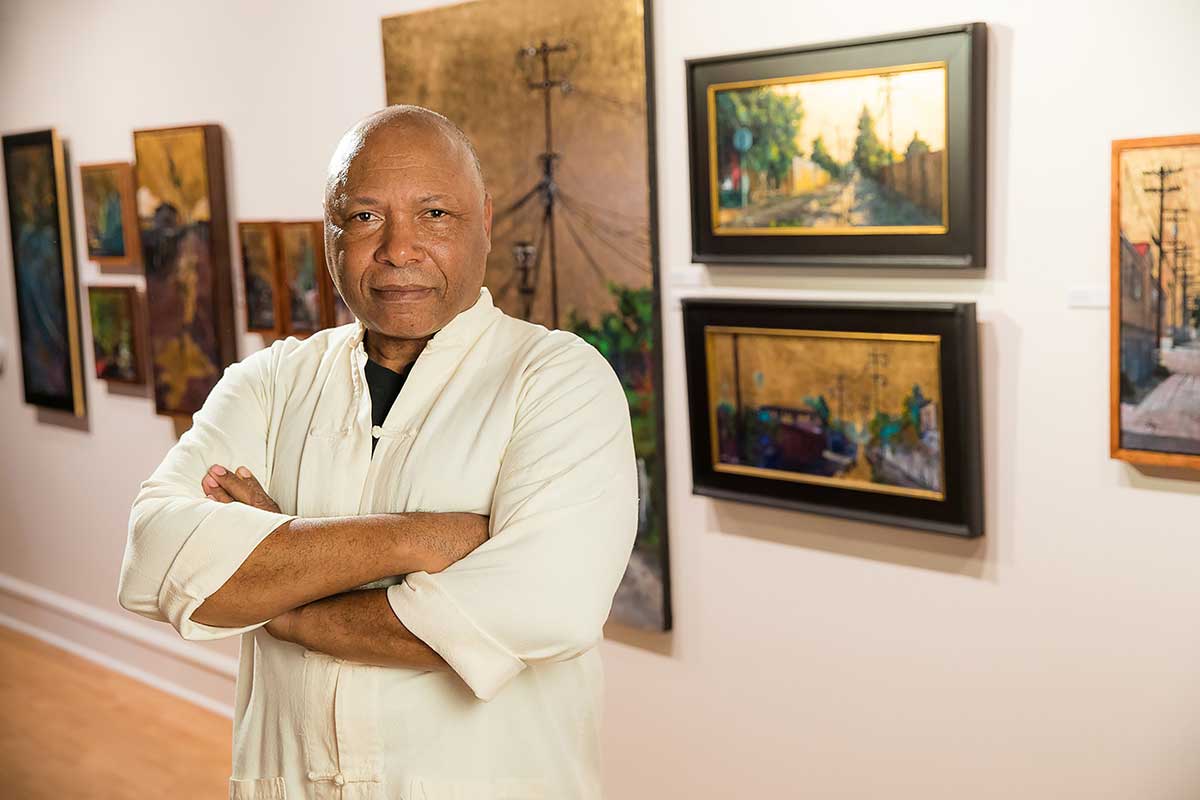DUKE WINDSOR | BURGER
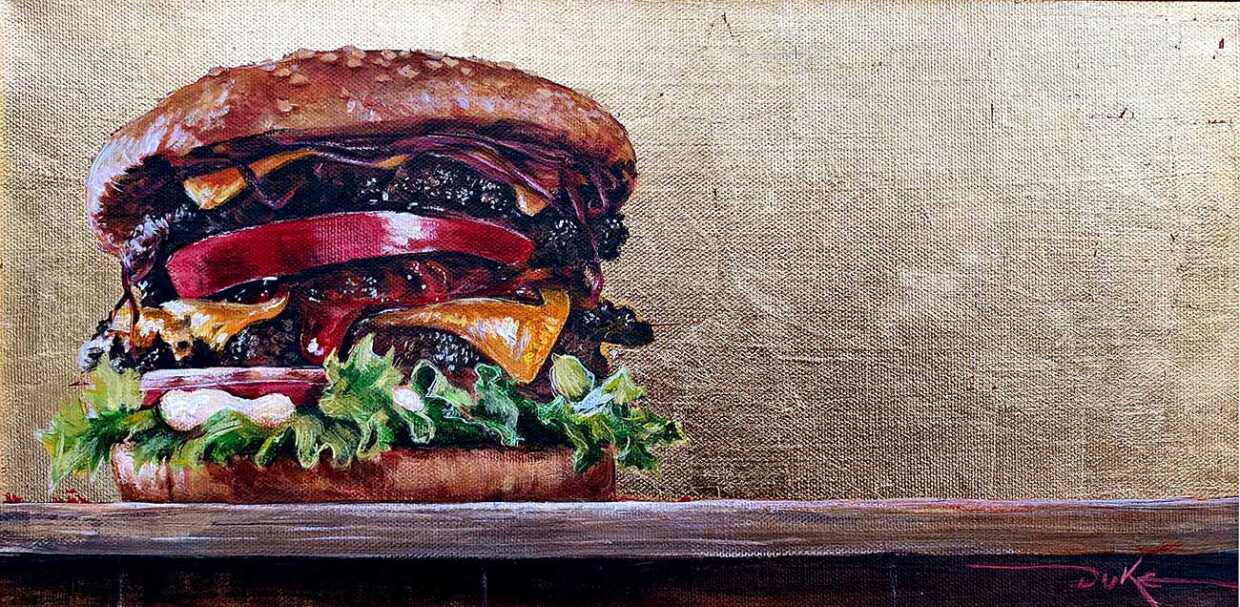
Acrylic & Imt. Gold Leaf
14 x 22 inch
Duke Windsor © All rights reserved.
There is a long history of food in art. Artists Van Dijck, Van Gogh, Louise Moillon, Cezanne, and Wayne Thiebaud have each contributed to this genre. They each have created spectacular still-life masterpieces with food as the subject. In this form of still-life painting, food painting gives us more opportunities to understand the cultural lifestyles of the past.
The Romans and Greeks each prided themselves in pursuing realistic depictions of food in art. In the Renaissance period, food was often incorporated with high realism in many religious-themed paintings. I have always admired the realistic Dutch depictions of markets and elaborate kitchen scenes filled with fruit, bread, slabs of meat, whole fish, boars with gleaming eyes staring back at you, and highly detailed colorful bouquets of flowers.
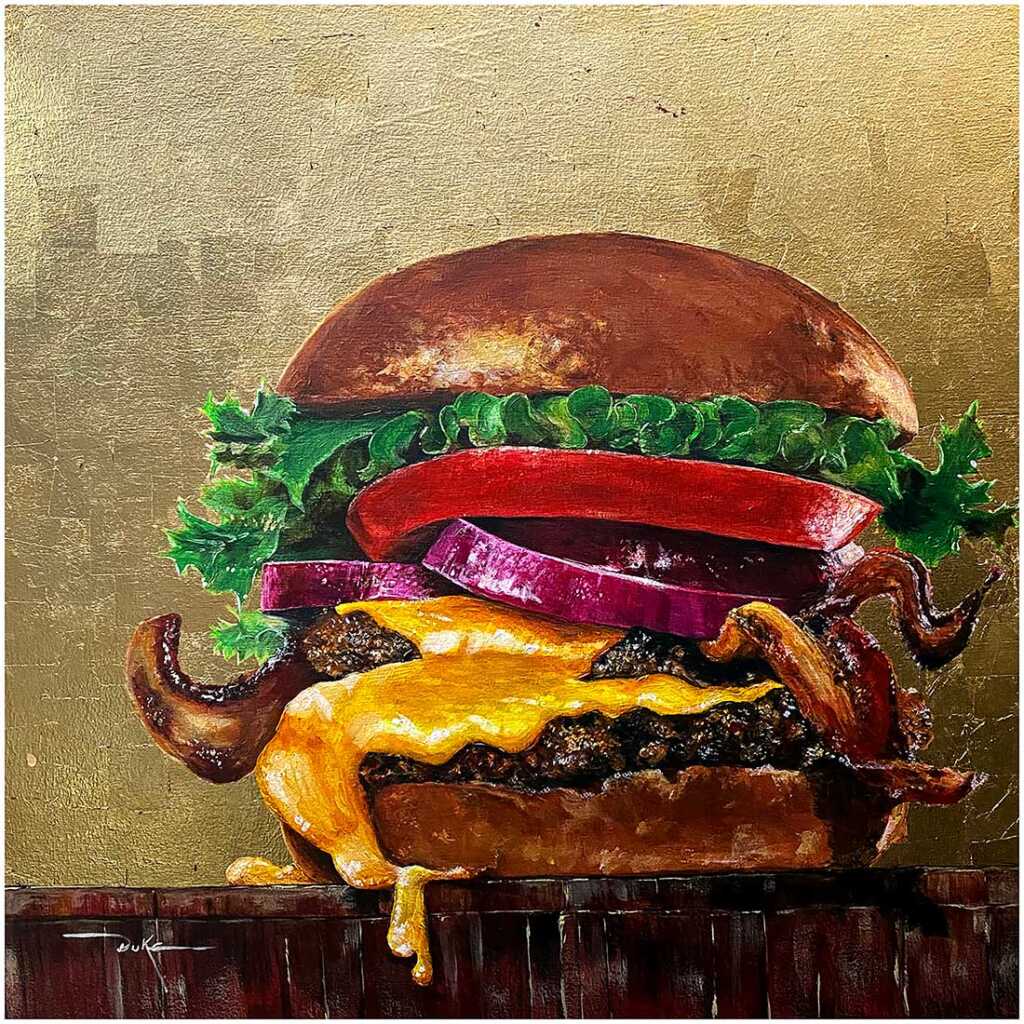
Acrylic & Imt. Gold Leaf
20 x 20 inch
Duke Windsor © All rights reserved.
Gold is the color of extravagance, wealth, riches, and excess, which hypnotizes. The color gold is a warm color that can be either bright and cheerful or somber and traditional. Its yellow and brown cousins are also associated with illumination, love, compassion, courage, passion, magic, and wisdom. In art, the Golden Mean or Golden Ratio is the theory that the natural world has perfect symmetry by divine design. Gold is attributed to the spiritual reverence held by ancient gods. The Golden Rule in the Old Testament refers to treating everyone equally. Gold is a symbol of divinity and is mentioned throughout the Bible. Pagan idols were often made from gold, and the Ark of the Covenant was overlaid with gold. The gift of gold to the Christ child symbolized his divinity—God in the flesh.
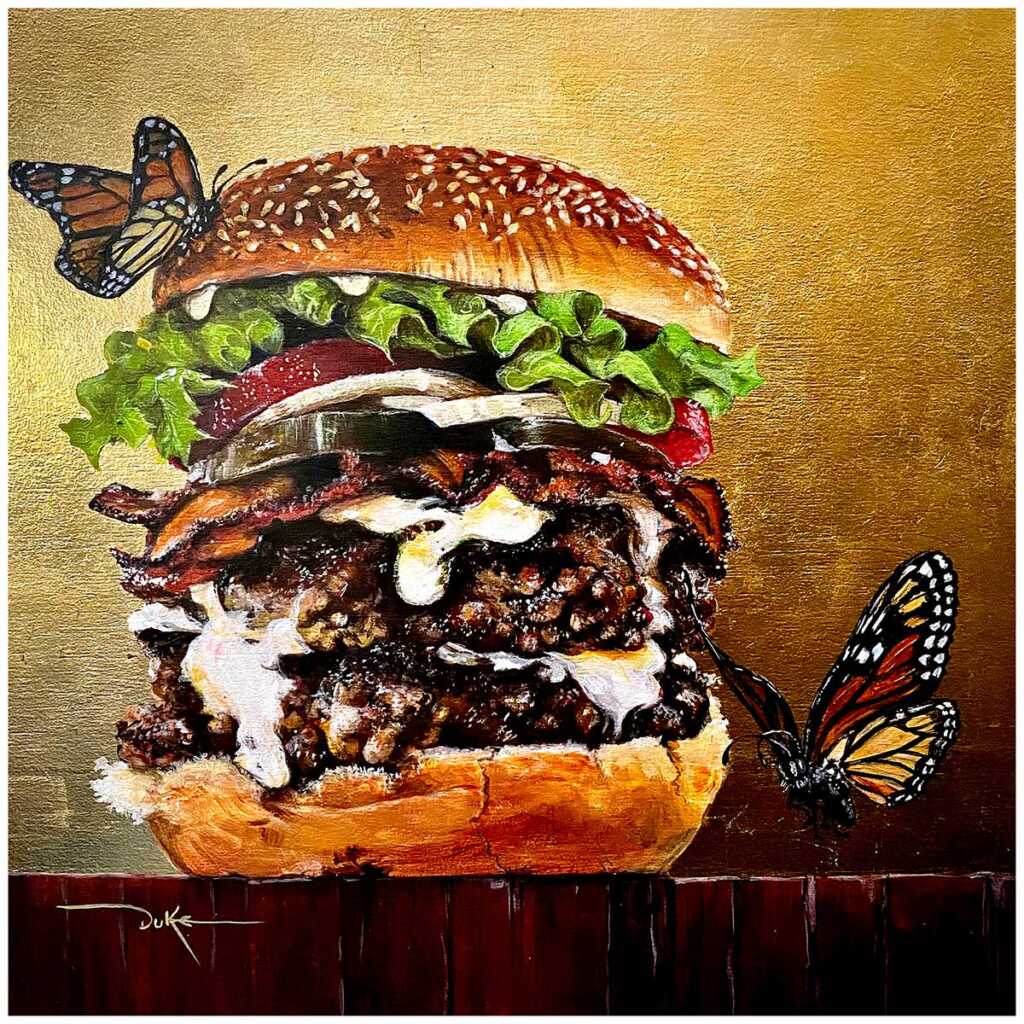
Acrylic & Imt. Gold Leaf
11 x 14 inch
Duke Windsor © All rights reserved.
An American Food Icon
The hamburger is a simple meal whose exact origin is unknown.
It was in the early 1900s when a cook from a small town in Texas placed a hamburger steak between two slices of bread, thus creating an instant meal to be carried out by a guest who was in a hurry and could not sit to eat.
The hamburger is a standard, everyday dish and is a product that is affordable and easily consumed. Advertisers spend millions of dollars to tantalize our senses with the best commercials and the most alluring ads. These ads are all developed by professional food stylists to create the “perfect” burger. As in art, this commercial still life is used to appeal to our emotions, senses, and desires and excite our taste buds, with the end result being to sell.

Acrylic & Imt. Gold Leaf
24 x 48 inch
Duke Windsor © All rights reserved.
“Advertisers spend millions of dollars to tantalize our senses with the best commercials and the most alluring ads. These ads are all developed by professional food stylists to create the “perfect” burger.”
-Duke Windsor
DUKE WINDSOR
Duke Windsor was born in Texarkana, Texas, and served in the U.S. Marine Corps as a radio operator, combat illustrator, and drill instructor. After leaving the service, Windsor was a freelance illustrator and amateur rodeo cowboy, competing in bull-riding, bareback and steer wrestling events. He subsequently studied classical voice at San Diego State University and performed professionally with the San Diego Opera Chorus. Windsor holds the rank of 4th Degree Black Belt in Kempo martial arts and continues to be an active singer-songwriter, guitar player, and solo performer.
Windsor has over 15 years of museum exhibition design and installation experience; he has worked for the San Diego Museum of Art, the San Diego Museum of Man, the San Diego Natural History Museum, the San Diego History Center, and the Mingei International Museum.
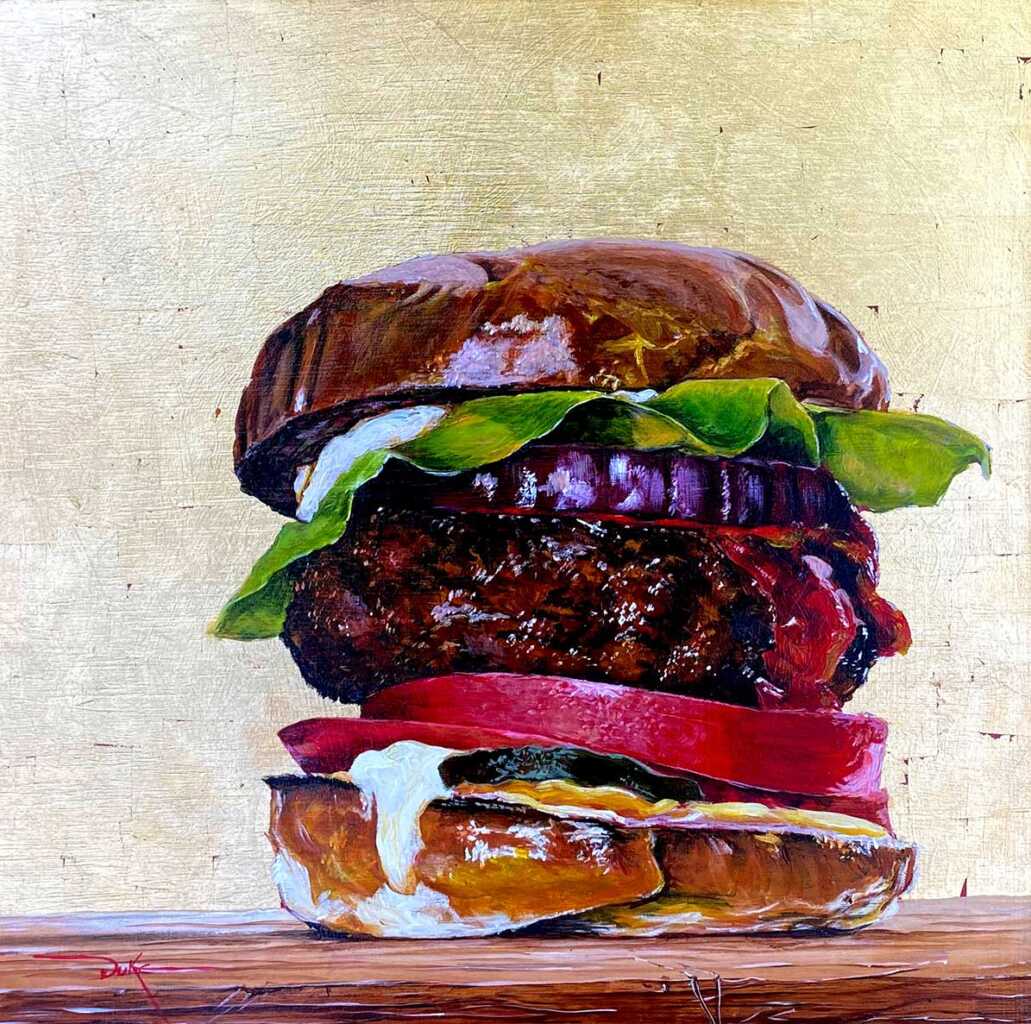
Acrylic & Imt. Gold Leaf
16 x 16 inch
Duke Windsor © All rights reserved.
Windsor served seven years as the founding Director of Exhibits at the U.S.S. Midway Museum. Currently, Windsor is CAD Design Engineering Manager at Full Swing Golf Simulators, headquartered in Carlsbad, California.
Windsor is an Associate Artist of the California Art Club and a former board member with A.R.T.S., A Reason to Survive, which empowers troubled youth through the arts. He is also the former Education Chair of the San Diego Museum of Art Artist Guild. Windsor has also served as a Public Arts Selection Committee member for the San Diego Regional Airport Authority Art Program.
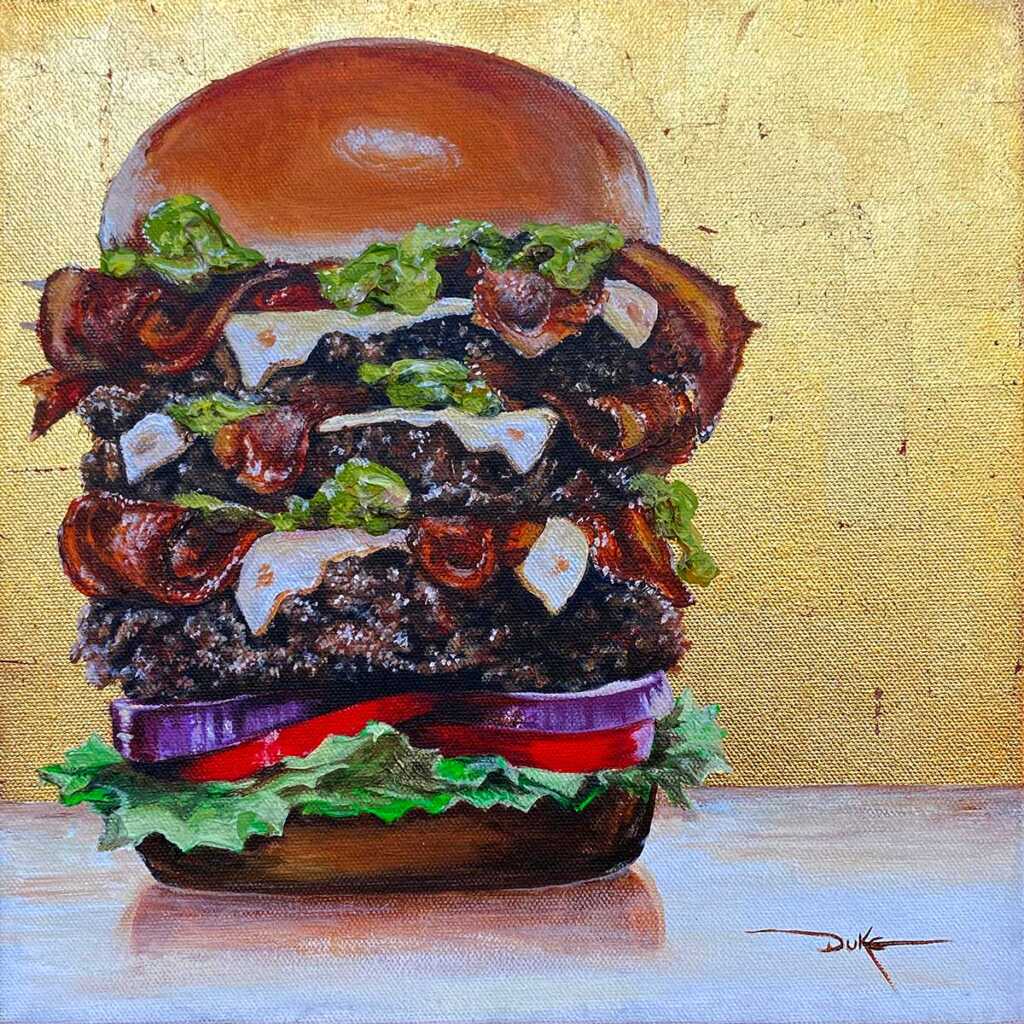
Acrylic & Imt. Gold Leaf
12 x 12 inch
Duke Windsor © All rights reserved.
“As the tradition of art flourishes and technology advances, the artist will continue to explore this desire to record our culinary tastes from the artist’s palette to our palate.”
-Duke Windsor
Windsor has taught art at many venues, including the San Diego Museum of Art and the Athenaeum, and he is currently an instructor of drawing and painting at art on 30th Street and offers a wide range of artist development workshops throughout San Diego County. Windsor’s award-winning paintings have been exhibited at juried solo shows, festivals, group exhibitions, and corporate venues in San Diego, Southern California, and throughout the U.S., and they are held in private collections throughout the U.S. and Europe. His work is in several museum collections, including the University of Maryland David C. Driskell Center.
Duke is represented in Southern California by Sparks Gallery.
Windsor’s art studio has been located at his Mt. Helix, California home since 2015.
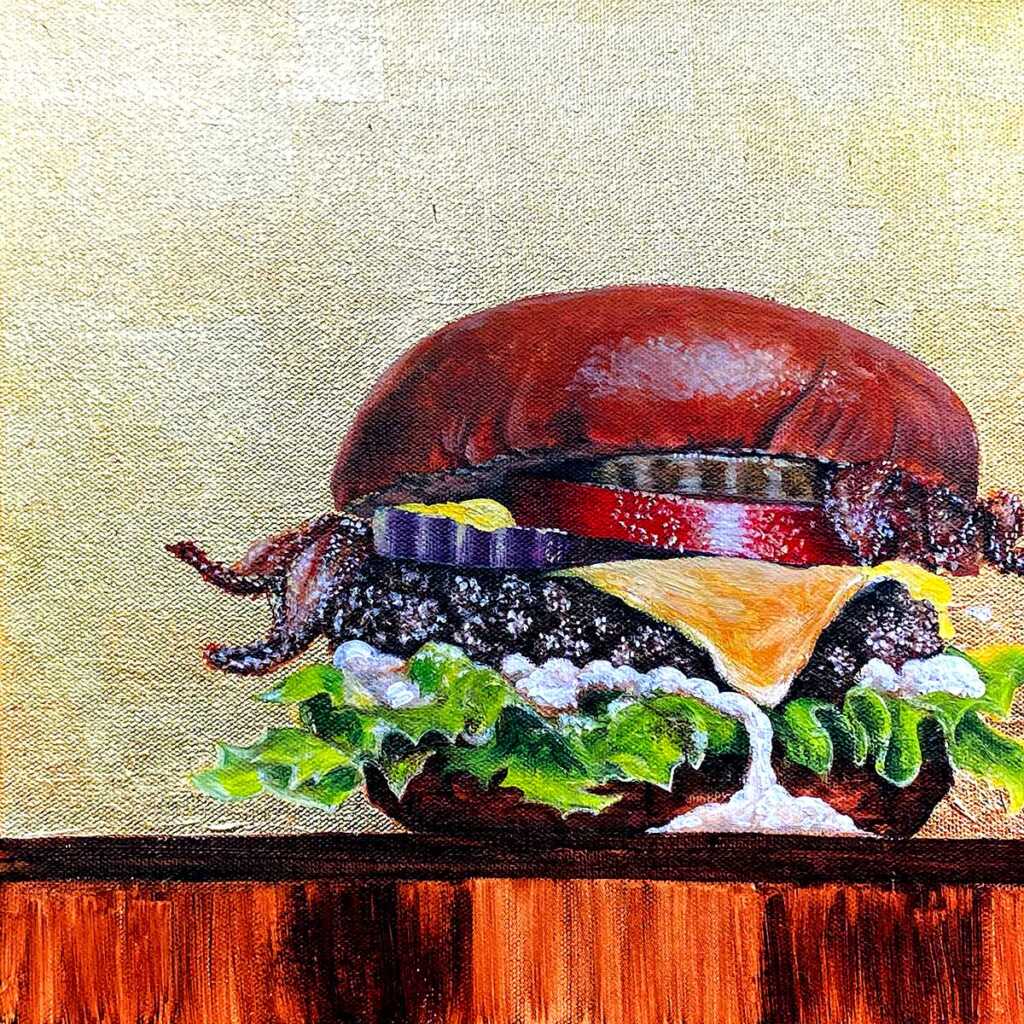
Acrylic & Imt. Gold Leaf
12 x 12 inch
Duke Windsor © All rights reserved.
CONTEMPORARY CULINARY
Today, in the 21st Century, ordinary objects from the kitchen, like condiment bottles in the sunlight, or even very stylized paintings of desserts, as in the works by Wayne Thiebaud, suggest a new approach to depicting our culinary tastes. As the tradition of art flourishes and technology advances, the artist will continue to explore this desire to record our culinary tastes from the artist’s palette to our palate.

